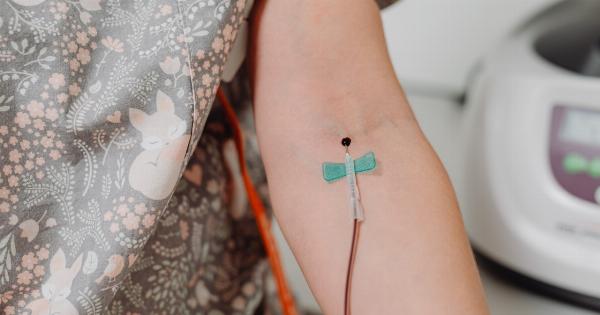Venous Thromboembolism is a serious medical emergency that results in the formation of blood clots within a vein. These clots can block the normal flow of blood, causing swelling, pain, and long-term damage to the veins.
In severe cases, blood clots can break off and travel to the lungs, causing pulmonary embolism which is life-threatening. Venous thromboembolism is a common cause of death among inpatients in hospitals.
Risks factors for Venous Thromboembolism
Several risk factors increase the likelihood of developing Venous Thromboembolism. Some of the factors include advanced age, immobility, surgery, pregnancy, cancer, obesity, and smoking.
Certain medical conditions, such as heart disease, inflammatory bowel disease, and some blood disorders, also increase the risk of developing Venous Thromboembolism.
Symptoms of Venous Thromboembolism
The signs and symptoms of Venous Thromboembolism vary depending on the location and size of the blood clot. Some of the common signs and symptoms include:.
- Swelling of the affected area
- Pain or tenderness in the affected area
- Redness or discoloration of the skin
- Warmth in the affected area
- Shortness of breath or chest pain in cases of pulmonary embolism
Prevention of Venous Thromboembolism
Preventing Venous Thromboembolism is crucial, particularly in hospital settings. Hospitals have implemented various methods of preventing the condition, such as:.
- Mechanical prophylaxis: This method involves the use of elastic stockings, intermittent pneumatic compression devices or foot pumps to increase blood flow in the lower extremities of the patient.
- Pharmacological prophylaxis: The use of anticoagulants, such as heparin or enoxaparin, can prevent blood clots from forming in patients at high risk of developing Venous Thromboembolism.
- Mobility: Encouraging patients to move around, especially after surgery or prolonged bed rest, can help prevent the formation of blood clots. Movement can increase blood flow and help prevent stasis of blood in the veins.
- Hydration: Staying hydrated can help reduce the risk of having blood clots. Drinking plenty of fluids can help prevent blood from thickening, which can lead to the formation of clots.
Treatment of Venous Thromboembolism
The treatment of Venous Thromboembolism depends on the severity of the condition. In mild cases, patients may be advised to take medication, rest, and do gentle exercises. In severe cases, hospitalization and intensive treatments may be required.
Some of the treatment methods include:.
- Anticoagulants: These are drugs that prevent blood from clotting. They can help prevent further growth of blood clots and reduce the risk of pulmonary embolism.
- Thrombolytic therapy: This is a treatment method that involves the use of medications that dissolve the blood clots. This method is usually used in severe cases of pulmonary embolism.
- Inferior vena cava filter placement: This involves inserting a filter in the vena cava, a large vein in the abdomen. The filter traps any blood clots that break off so that they cannot travel to the lungs.
Conclusion
Venous Thromboembolism is a serious medical emergency that requires prompt diagnosis and treatment. Preventing Venous Thromboembolism is crucial, particularly in hospital settings.
Patients who are immobile or have other risk factors should be evaluated and monitored promptly, and appropriate treatments should be initiated.




























